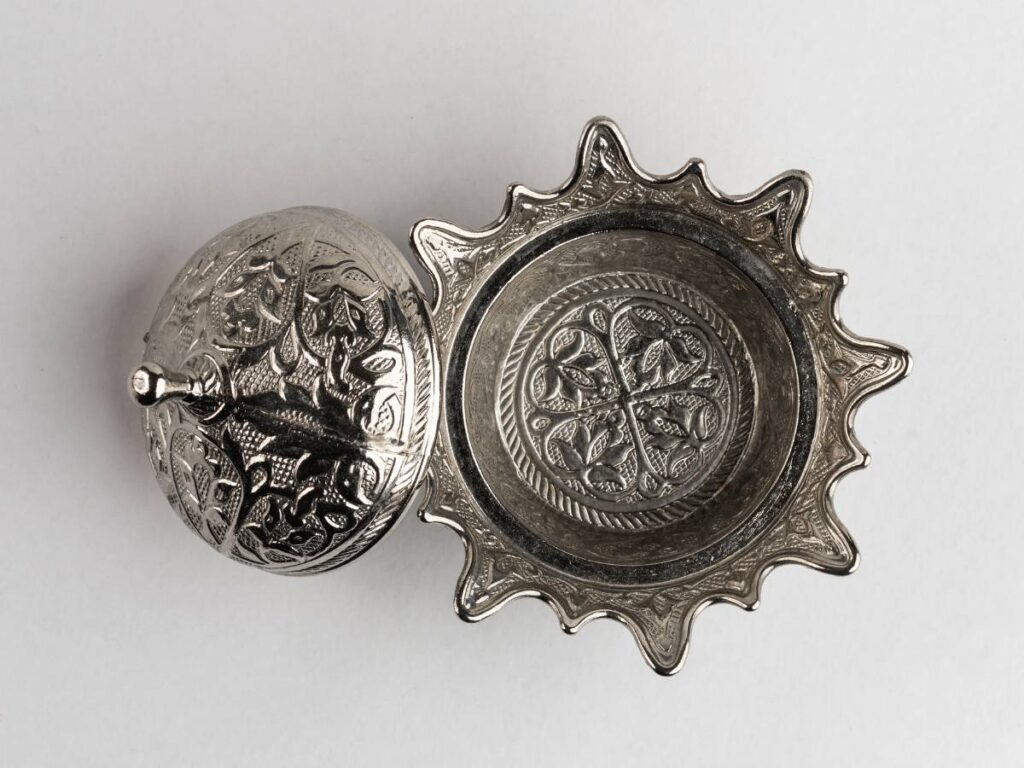Let’s talk about something you encounter every day yet may not give a second thought to – aluminum. It’s in your soda cans, cars, and even smartphones. But have you ever wondered about the origins of this ever-present metal? Well, buckle up! We’re about to go on a time-traveling journey, unwrapping the intriguing story of aluminum.
Aluminum Before the 19th Century
Ancient Times
Indeed, the association of aluminum with soda cans today might lead one to overlook its fascinating history in ancient civilizations. Although they didn’t recognize it as aluminum as we do now, these ancient cultures were familiar with its compounds. Notably, the ancient Greeks and Romans utilized alum, which contains aluminum, in their dyeing and tanning processes. It’s an intriguing twist of fate that the metal, now commonly associated with everyday objects like beverage cans, once played a vital role in the high fashion industries of antiquity. This serves as a reminder of how knowledge and perception of materials can evolve, from ancient applications in art and fashion to modern uses in various aspects of our lives.
Middle Ages
Throughout the Middle Ages, alum rose as a highly prized commodity with a wide range of applications. Its versatility proved invaluable in several industries, including papermaking, where it played a major role in preparing parchment and paper for writing. Artisans treated raw materials with alum and produced durable writing surfaces, contributing to disseminating knowledge through the written word.
Beyond its significance in papermaking, alum’s fire-resistant properties made it a main ingredient in fire-proofing materials, safeguarding structures and precious items. In medicine, aluminum compounds found widespread use in various treatments and remedies, serving as an astringent for wound healing and a laxative for gastrointestinal ailments. Though the pure form of aluminum remained elusive, its compounds were the unsung heroes of the Middle Ages, contributing to advancements in technology, science, and medicine and leaving an indelible mark on the progress of human civilization.
Unearthing a Mystery: The Birth of Modern Aluminum (1808-1827)
In the 19th century, the modern history of aluminum took a momentous turn with Sir Humphry Davy’s discovery of its existence. The English chemist identified aluminum as a distinct element, unraveling its presence in chemistry. However, despite this groundbreaking revelation, a fascinating twist happened. Davy faced a puzzling challenge – he couldn’t isolate aluminum in its pure form. The metal remained like an elusive ghost, recognized but not yet captured in its elemental state.
The quest to isolate aluminum continued, and it wasn’t until 1825 that a breakthrough occurred. Danish physicist and chemist Hans Christian Ørsted obtained tiny quantities of pure aluminum using a complex potassium amalgam reaction. Nevertheless, the practical production of aluminum remained arduous due to its widespread presence in nature as a compound and its affinity for oxygen, which made extraction challenging. It wasn’t until the late 19th century that technological advancements, such as the Hall-Héroult process developed by Charles Martin Hall and Paul Héroult, revolutionized aluminum production, making it a widely available and valuable material in the modern world.
Aluminum as the Metal of Kings (1827-1886)

It was an extraordinary achievement when Friedrich Wöhler successfully isolated aluminum in 1827. At that time, aluminum was scarce and considered a rare and precious metal. Its scarcity was so pronounced that aluminum held a higher value than gold! During this period, aluminum became a symbol of luxury and exclusivity. It’s rarity and high cost meant that only the wealthiest and most privileged individuals could afford items made from aluminum. Napoleon III, the French Emperor, was among those who recognized the allure of aluminum’s rarity and prestige.
But, as technology advanced and methods of aluminum production improved, its scarcity gradually diminished, greatly reducing its cost. This transformation democratized access to aluminum, eventually becoming a staple material used in various industries and everyday products worldwide. The shift from an exceedingly rare metal, reserved for the elite, to an essential and commonplace material highlights the intriguing journey of aluminum through history, from being the stuff of kings and queens to becoming an integral part of our daily lives.
The Invention of the Hall-Heroult Process
In the late 19th century, Charles Martin Hall and Paul Héroult achieved a groundbreaking feat by independently discovering a commercial method for producing aluminum. Their revolutionary Hall-Héroult process involved the application of electricity to a solution of alumina in cryolite, enabling large-scale aluminum production. This game-changing innovation drastically lowered the cost of aluminum, making it accessible to the masses and transforming its status from a precious and pricey metal to an essential and widely used material.
The widespread availability of aluminum totally affected various industries, transforming construction, transportation, packaging, and consumer goods. Its lightweight, corrosion-resistant, and versatile properties make it an ideal choice for many different applications. As a result, aluminum has become an integral part of modern life, enriching our daily experiences and transforming our lives. The ingenuity of Hall and Héroult ushered in the age of aluminum, and their legacy continues to shine through the unnoticed presence of this remarkable metal in countless aspects of our world.
Aluminum Takes Flight: The Aerospace Industry
The aerospace industry took flight as the 20th century dawned, and aluminum became more popular. The metal’s lightweight yet robust characteristics made it the perfect choice for aircraft construction. With its high-strength properties, aluminum quickly became the go-to material for aviation pioneers like the Wright Brothers. Their groundbreaking Flyer, a significant milestone in aviation history, featured an aluminum engine. From the very beginning of manned flight, aluminum played a role in helping us reach for the skies.
As the aerospace industry continued to advance, aluminum’s significance remained unmatched. Its contribution extended beyond engines, as entire aircraft frames and components began to be fashioned from aluminum. The widespread adoption of this versatile metal revolutionized aviation, making air travel more efficient, reliable, and accessible to people worldwide. Aluminum’s legacy in the aerospace industry proves its transformative power, leading humanity’s dreams of flight to new heights and keeping us connected to the skies.
Aluminum and War Efforts

Aluminum’s worth became evident during the crucible of war, shining as a true wartime hero in both World Wars. In World War I, its significance was apparent in aircraft construction and the production of mess kits, showcasing its versatility and strength on the battlefield. As World War II unfolded, the demand for aluminum surged to unprecedented levels, prompting governments to encourage citizens to contribute any aluminum items they possessed for the war effort. This abundant resource played a big role, as it was recycled and repurposed for military use, becoming an invaluable asset in various military applications.
Amidst the chaos of war, aluminum’s adaptability and widespread availability proved indispensable, supporting military operations and contributing to the overall war effort. From aircraft frames to everyday necessities, its contribution solidified its status as a hero of wartime ingenuity, demonstrating how seemingly ordinary materials can give extraordinary impact during times of conflict.
The Green Revolution: Aluminum and Recycling
In recent decades, aluminum rose as a shining symbol of recycling, becoming the poster child of sustainability. Thanks to its unique properties, aluminum is recyclable, making it a favored material in the green revolution. Its recyclability has sparked a global effort to promote recycling programs and reduce environmental impact as more and more people recognize the importance of responsible waste management and resource conservation.
So, the next time you crack open a soda can take a moment to appreciate that you are playing a part in a larger, more sustainable picture. By choosing aluminum, we contribute to a future that embraces recycling, resource efficiency, and environmental stewardship, paving the way toward a greener and more sustainable world for future generations.
Frequently Asked Questions
- When was Aluminum Discovered?
Aluminum was identified in 1808 by Sir Humphry Davy, but it was not until 1827 that Friedrich Wöhler isolated it.
- Why was Aluminum Once Considered More Valuable than Gold?
Before the invention of the Hall-Heroult process, producing pure aluminum was a laborious and costly task, making it extremely valuable.
- How has the Use of Aluminum Evolved Over Time?
Aluminum has seen many uses throughout history, from dyeing and tanning in ancient times to modern uses in aircraft construction and recycling.
Silver Ghost’s Tale
And there you have it! The long and winding tale of aluminum – from its early beginnings as a mysterious element, through its royal phase, and into the modern era of aerospace and sustainability. So next time you come across an aluminum product, take a moment to appreciate its rich history.
References
- History of Aluminum | The Aluminum Association
- Aluminum | Minerals Education Coalition
- History of Aluminum in the Aerospace Industry | Metal Supermarkets
- Recycling | The Aluminum Association
- Aluminum | Los Alamos National Laboratory
Our Locations
Get a Quote Now
